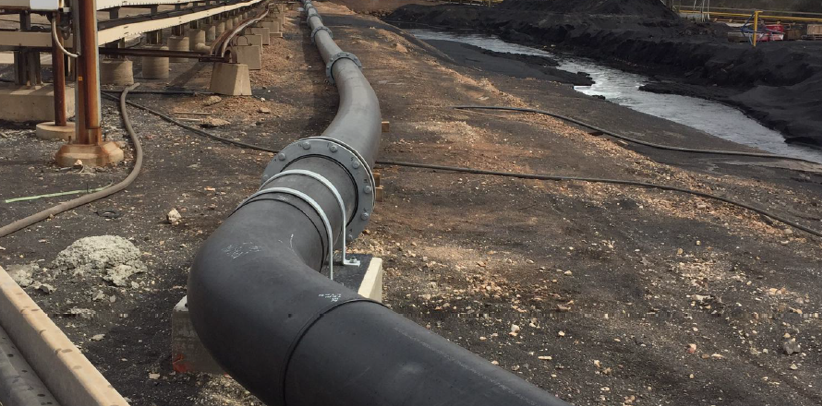Upgraded seawater cooling system makes a splash

Since the early 2000s, seawater cooling systems have revolutionised Australia’s approach toward Heating, Ventilation, and Air Conditioning (HVAC).
By pumping seawater from the ocean, circulating it around a building or facility, and then returning the warm water to the ocean, seawater cooling systems offer a range of benefits for many large-scale projects, including substantial energy savings and carbon reductions.
It’s no wonder that they’re becoming increasingly common across the country — in fact, in Sydney, the Sydney Opera House, Star City Casino, AMP Cove, Woolloomooloo Wharf, King Street Wharf and the Sydney Harbour Convention Centre are all examples
of installations.
While seawater cooling is not a new concept in Australia, using HDPE pipe as part of the system is a new idea that’s gaining traction.
One of the main reasons is that while other pipe materials used in seawater cooling often have high ongoing maintenance costs due to corrosion and control of marine biology growth, HDPE pipe requires significantly less ongoing maintenance, and has a longer lifespan.
When a large South Australian processing plant engaged Advanced Piping Systems to help increase the capacity of its saltwater intake cooling system, we knew our HDPE pipe — and prefabrication team — were up for the challenge.
Increasing the capacity of the saltwater intake cooling system
The processing plant wanted to increase the capacity of its saltwater intake cooling system — used to maintain the temperature of the processing components — in order to increase the capacity of the plant overall.
“The plant was operating at about 18 percent capacity, and they wanted to ramp-up production to about 80 per cent, which an upgraded saltwater intake cooling system would enable them to,” said Mark Dowley, Business Development Manager at Advanced Piping Systems.
“They had an existing pipeline in place, which took water from the sea, circulated it around the plant to cool it down, before the water eventually flowed into a large, open canal.
“While the saltwater used to cool down the plant didn’t pick up any chemicals or contaminants on its journey, it was warm by the time it had been circulated around and was sent back out to sea, which had environmental ramifications.”
Advanced Piping Systems was engaged to design and fabricate a temporary saltwater intake cooling system that would not only increase the plant’s overall capacity, but would also meet stringent EPA standards, and be delivered within a tight timeframe.
Developing a unique and sustainable solution
After an initial site visit to meet the project team, discuss the project and take measurements, the team at Advanced Piping Systems designed and developed a unique and sustainable upgrade to the system.
“We suggested that they replace the open system with a closed, piped system, that transported the seawater further out into the ocean, and we placed a big diffuser to soften the flow of the water at the end of the line,” said Mark.
“Because saltwater was being transported, it needed a non-corrosive piping system, and our 450mm PE100 product was perfect for the job.
“In total, the pipe was 320 meters long, and wasn’t just a straight run. It had to snake around temporary buildings, go underground, under a bridge and all sorts of things.
“We also considered the thermal expansion of the pipe, and how to accommodate for that, with large concrete thrust blocks.”
The solution developed by Mark and the team also took into account the fact that the upgrade was only temporary, to enable the plant to reach 80 per cent operating capacity.
“Our solution was different to the other options proposed as part of the tender process,” said Mark. “Other contractors just wanted to put in a pipe, weld it in place, and leave.
“Recognising that this was only a temporary upgrade to get them to 80 per cent capacity (before another upgrade to get them to 100 per cent capacity), we suggested fabricating the whole system into 12 metre sections, so that when the project comes to the end, it can be pulled apart, put it in storage and used on a future project.”
Once the design had been approved, Advanced Piping Systems was able to offer a full turnkey solution for the project.
“We supplied everything — pipe, fittings, nuts, bolts — you name it!
“The whole kit was sent out there, and their regular fitters could bolt it together. They didn’t have to bring in welding contractors.
“With PE100 pipe being lightweight too, they didn’t need too much cranage either.
“So, there was no specialist labour involved. That’s the beauty of it. All the specialist labour was done here, on site at Advanced Piping Systems in Adelaide.”
Receiving the tick of approval
From the first test, the upgraded saltwater intake cooling system has increased capacity for the processing plant, and received sign-off from the EPA.
“It all went to plan, and the feedback from the client was that the project went very, very well,” said Mark.
“It fitted perfectly, with no rework required, no leaks the whole way along it, and the new system increased capacity at the plant from the very first test.
“Now that it’s a fail-safe, sealed system, the EPA is happy because contaminants from outside the pipe aren’t able to get into the pipe, so they signed off.”
As a result of the success of this upgrade, Advanced Piping Systems have also won the contract to undertake the second upgrade of the cooling system — increasing the pipe size from 450mm to 1200mm.
At Advanced Piping Systems, we’d love to work with you to supply our expert advice, quality PE pipe, fittings and accessories, welders or training to your project.
Request a quote or contact our friendly customer service team to discuss your requirements today.

